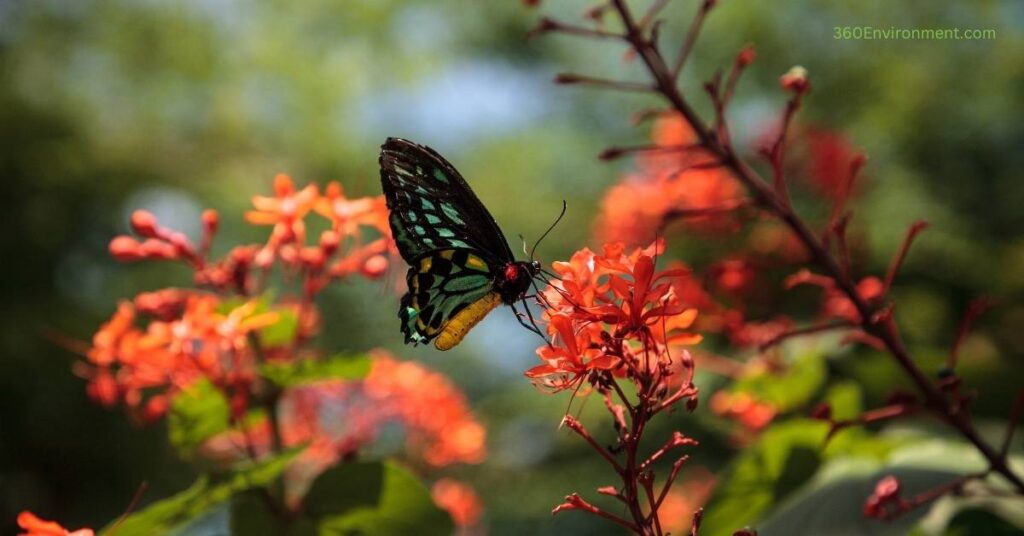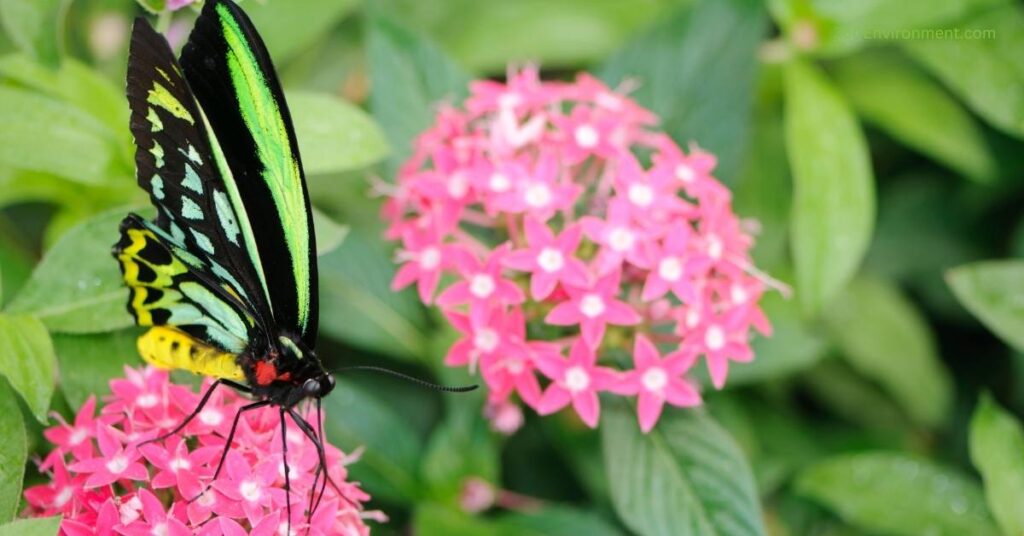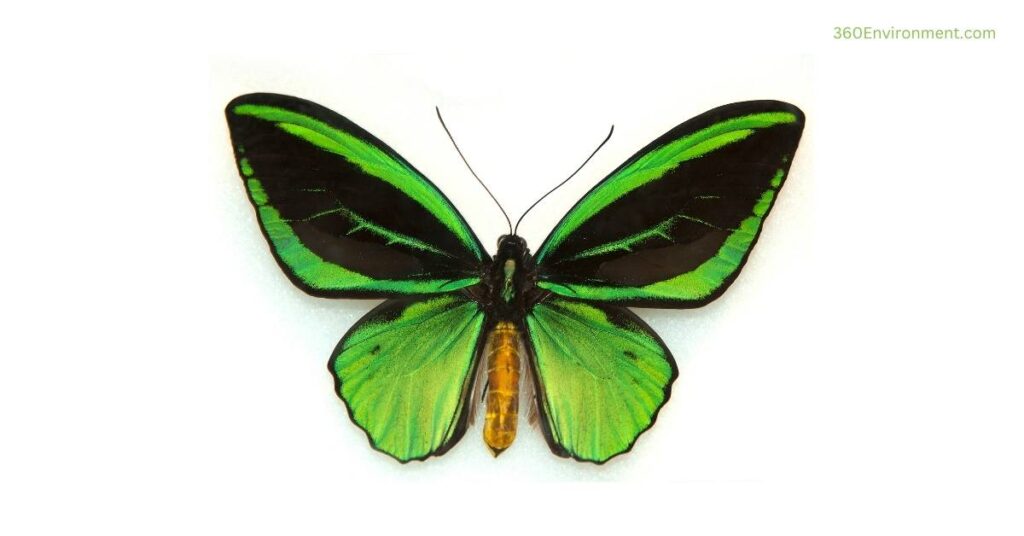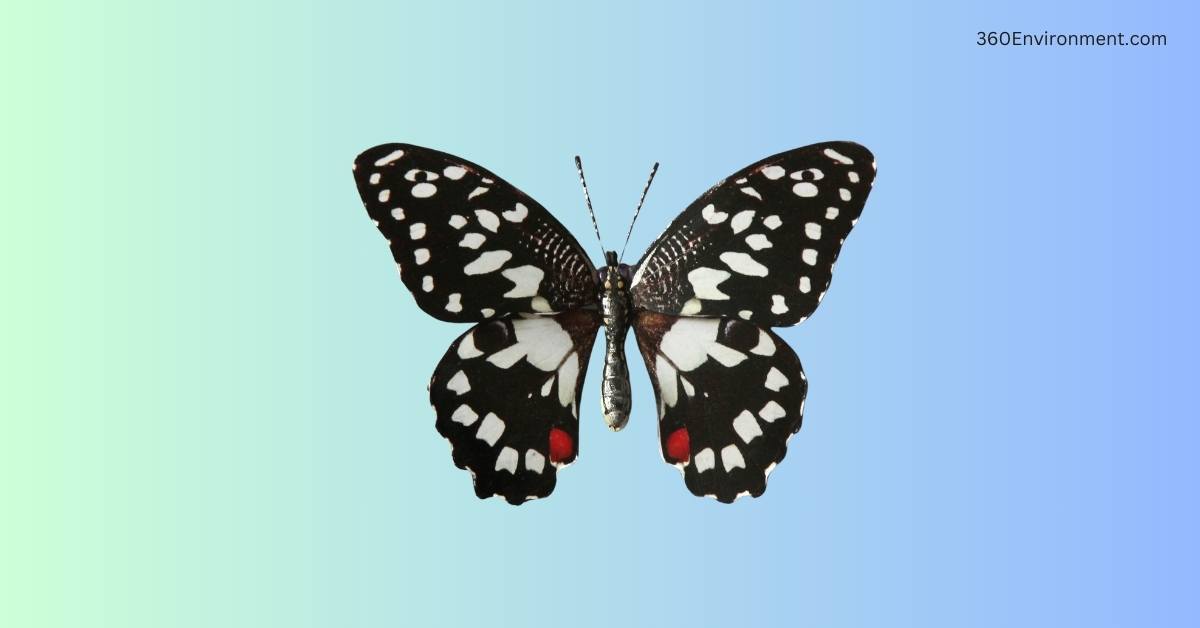The genus Ornithoptera, commonly known as birdwing butterflies, represents some of the most spectacular and ecologically significant insects on Earth. Found primarily in the Australasian region, these butterflies are renowned for their large wingspans, vibrant colors, and intricate patterns. Not only are they a marvel of evolutionary adaptation, but they also play essential roles in their ecosystems as pollinators, prey, and bioindicators of environmental health.
This article will provide a comprehensive look into the environmental niche of Ornithoptera species, focusing on their habitat preferences, life cycle, interactions with other species, and their critical role in maintaining biodiversity. Additionally, we will explore the threats they face from human activity and conservation efforts to protect these extraordinary butterflies.
1. Taxonomy and Morphology of Ornithoptera
Ornithoptera belongs to the family Papilionidae, which includes all swallowtail butterflies. Birdwings, however, are unique due to their size and appearance, with some species reaching wingspans of up to 30 centimeters (12 inches). The genus includes several species, with Ornithoptera priamus and Ornithoptera alexandrae (Queen Alexandra’s birdwing) being two of the most famous.

1.1 Taxonomy
- Kingdom: Animalia
- Phylum: Arthropoda
- Class: Insecta
- Order: Lepidoptera
- Family: Papilionidae
- Genus: Ornithoptera
This genus includes species such as O. priamus, O. alexandrae, O. croesus, and O. euphorion. Each species exhibits differences in size, coloration, and distribution, but they all share similar ecological characteristics.
1.2 Morphological Characteristics
Ornithoptera butterflies are known for their large size, with males typically exhibiting more vibrant coloration than females. Males often have metallic greens, blues, and golds on their wings, while females are generally larger but have more subdued colors like brown, black, and white. This sexual dimorphism is common among butterfly species and serves both to attract mates and to camouflage females when they are laying eggs.
- Wings: The wings of birdwing butterflies are broad and angular, which contributes to their powerful and graceful flight. The wings are adorned with intricate patterns that serve as both camouflage and mating signals.
- Body: Their bodies are robust, with strong thoracic muscles that power their large wings. The proboscis, a long coiled structure used for feeding, is highly developed, allowing the butterflies to reach deep into flowers for nectar.
2. Habitat and Geographic Distribution
Ornithoptera butterflies are native to the tropical rainforests of the Australasian region, including Papua New Guinea, northern Australia, and parts of Southeast Asia. These areas are characterized by high humidity, dense vegetation, and a rich diversity of plant and animal life.

2.1 Habitat Preferences
Birdwing butterflies thrive in tropical rainforests, particularly in lowland and montane forests where their host plants, the species of the genus Aristolochia, are abundant. These habitats provide the necessary resources for all stages of the butterfly’s life cycle, from egg to adult.
- Forest Canopies: Many Ornithoptera species, especially the larger ones like O. alexandrae, are commonly found in the upper layers of the rainforest, where they have access to a greater abundance of nectar-rich flowers. The canopy provides protection from many ground-based predators, and the butterflies’ strong flight capabilities allow them to navigate this complex environment with ease.
- Edge Habitats: Some species are also found in forest edges and clearings, where sunlight reaches the forest floor and stimulates the growth of flowering plants. These transitional zones between forest and open areas can provide critical feeding sites for adult butterflies.
2.2 Geographic Distribution
Ornithoptera species are largely restricted to the Australasian region, particularly in areas with warm, humid climates. Species like O. priamus are more widely distributed, ranging from the islands of Indonesia to northern Queensland in Australia. In contrast, species like O. alexandrae are much more restricted, being endemic to the rainforests of Papua New Guinea.
- Endemism: Some species, such as the Queen Alexandra’s birdwing (Ornithoptera alexandrae), are endemic to very specific regions. This narrow distribution makes them particularly vulnerable to habitat destruction and other environmental pressures.
3. Ecological Role and Trophic Interactions
Birdwing butterflies play a crucial role in the ecosystems they inhabit. As pollinators, prey, and bioindicators, they help maintain the balance of tropical rainforests. Their interactions with plants and other species are integral to the survival of the ecosystems they are part of.

3.1 Role as Pollinators
One of the most significant ecological roles of Ornithoptera species is their role as pollinators. Their large size and long proboscises allow them to feed on nectar from deep, tubular flowers that many smaller insects cannot access. As they feed, they inadvertently transfer pollen from one flower to another, aiding in plant reproduction.
- Specialization: Some Ornithoptera species are known to specialize in feeding on certain plants, such as members of the Aristolochiaceae family. The co-evolution between birdwing butterflies and their host plants has created a mutualistic relationship that benefits both the butterfly and the plant species.
- Floral Resources: The presence of birdwings is often associated with healthy forest ecosystems, as their preferred flowers thrive in diverse, undisturbed habitats. These butterflies are particularly important in the pollination of large, brightly colored flowers that require strong, capable pollinators.
3.2 Role in Food Webs
Ornithoptera species are also integral components of food webs. While they are pollinators as adults, they serve as prey for various predators at different life stages. Birds, reptiles, and even other insects target birdwing butterflies as a food source.
- Predation: Adult birdwings, despite their size, are preyed upon by birds such as flycatchers and kingfishers. Their caterpillars, which are often brightly colored to warn predators of their toxicity, are targeted by wasps and other predatory insects. In response, Ornithoptera caterpillars have evolved defenses such as sequestering toxins from their host plants to deter predators.
- Trophic Interactions: As both prey and predator, Ornithoptera species play a vital role in maintaining the balance of energy flow within the rainforest ecosystems.
3.3 Bioindicators of Environmental Health
Due to their sensitivity to changes in habitat quality and climate, Ornithoptera butterflies are excellent bioindicators. A decline in butterfly populations often signals broader environmental issues, such as habitat destruction, climate change, or the loss of floral diversity. Conservation biologists monitor birdwing butterfly populations as a way to gauge the health of tropical ecosystems.
4. Life Cycle and Reproduction
The life cycle of Ornithoptera species follows the typical stages of butterfly development: egg, larva (caterpillar), pupa (chrysalis), and adult. However, each stage is marked by unique adaptations that ensure the survival of the species in its specific ecological niche.

4.1 Egg Stage
Female birdwing butterflies lay their eggs on the leaves of host plants, typically species within the Aristolochia genus. These plants provide food for the emerging larvae, and their chemical composition is crucial for the development of the caterpillars.
- Egg-Laying Behavior: Female birdwings are selective about where they lay their eggs, often choosing plants that are in good health and in areas with adequate sunlight. This behavior ensures that their offspring have the best chance of survival.
4.2 Larval Stage (Caterpillar)
Once the eggs hatch, the larvae begin feeding on the leaves of the host plant. Birdwing caterpillars are often brightly colored, with patterns that warn predators of their toxicity. As they feed, the caterpillars accumulate toxins from the plants, which they sequester in their bodies as a defense mechanism.
- Feeding and Growth: The larvae grow rapidly, molting several times before they are ready to pupate. During this stage, they are voracious feeders, consuming large amounts of plant material to fuel their development into adult butterflies.
4.3 Pupal Stage (Chrysalis)
After the larval stage, the caterpillar enters the pupal stage, where it forms a chrysalis. Inside the chrysalis, the caterpillar undergoes metamorphosis, transforming into an adult butterfly. The chrysalis is often camouflaged to resemble a leaf or twig, providing protection from predators during this vulnerable stage.
4.4 Adult Stage
Once metamorphosis is complete, the adult butterfly emerges from the chrysalis. After its wings dry and harden, the butterfly begins its search for nectar and mates. The adult stage is the shortest in the life cycle, but it is the most visible and crucial for reproduction.
- Mating Behavior: Males often engage in courtship displays, using their vibrant wing colors and pheromones to attract females. After mating, females lay their eggs, completing the life cycle.
5. Human Impacts and Conservation Challenges
Like many species that rely on tropical forests, Ornithoptera butterflies face significant threats from human activities. Habitat destruction, climate change, and illegal collection for the pet and specimen trade have all contributed to the decline of some species, particularly those with restricted ranges.

5.1 Habitat Destruction
The primary threat to Ornithoptera species is habitat destruction due to deforestation and land-use changes. As forests are cleared for agriculture, logging, and development, the butterflies lose their host plants and nectar sources. This destruction is particularly devastating for species like Ornithoptera alexandrae, which rely on very specific habitats.
- Fragmentation: Even in areas where forests remain, habitat fragmentation can isolate populations, reducing genetic diversity and making it difficult for butterflies to find mates and resources.
5.2 Climate Change
Changes in temperature and precipitation patterns due to climate change are likely to affect the distribution and behavior of Ornithoptera species. Warmer temperatures could shift their range, while changes in rainfall could alter the availability of host plants and nectar sources.
- Phenological Shifts: Climate change may also cause shifts in the timing of key life cycle events, such as the emergence of adults and the flowering of nectar plants, potentially leading to mismatches between the butterflies and their food sources.
5.3 Illegal Collection
Due to their size and beauty, birdwing butterflies are highly sought after by collectors. Despite legal protections for some species, illegal collection for the international butterfly trade continues to threaten populations, particularly in remote areas where enforcement is difficult.
6. Conservation Efforts
Conservation efforts for Ornithoptera butterflies focus on habitat preservation, legal protections, and breeding programs. The establishment of protected areas in regions where these butterflies are found is crucial for maintaining their populations and the ecosystems they inhabit.

6.1 Habitat Protection
One of the most effective ways to conserve Ornithoptera species is through the protection of their natural habitats. National parks, nature reserves, and conservation areas can provide safe havens for these butterflies, ensuring that their host plants and nectar sources are preserved.
6.2 Legal Protections
Several Ornithoptera species, including O. alexandrae, are protected under international law through the Convention on International Trade in Endangered Species (CITES). These protections aim to regulate the trade of birdwing butterflies and prevent their exploitation.
- Enforcement and Education: While legal protections are important, they must be enforced effectively to be successful. Public education about the ecological importance of Ornithoptera species can also help reduce demand for illegally collected butterflies.
6.3 Breeding and Reintroduction Programs
Captive breeding programs for Ornithoptera butterflies have been established in some regions to bolster wild populations and reduce pressure from illegal collection. These programs aim to breed butterflies in captivity and, where possible, reintroduce them into their natural habitats.
7. Conclusion
Ornithoptera butterflies represent some of the most magnificent and ecologically important insects in the world. Their environmental niche as pollinators, prey, and bioindicators makes them critical components of tropical ecosystems. However, their beauty and ecological significance also make them vulnerable to human activity.
Conserving these butterflies requires a combination of habitat protection, legal enforcement, and public awareness. By preserving the rainforests they inhabit and regulating their trade, we can ensure that future generations will continue to marvel at the sight of birdwing butterflies soaring through the tropical canopy. Understanding and protecting the environmental niche of Ornithoptera species is not just about saving a single genus of butterflies; it is about preserving the biodiversity and ecological integrity of the tropical forests they call home.
Read More: Antennae Moth: A Key to Ecological Balance

